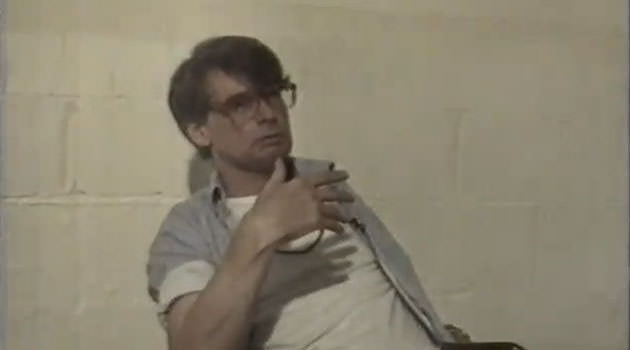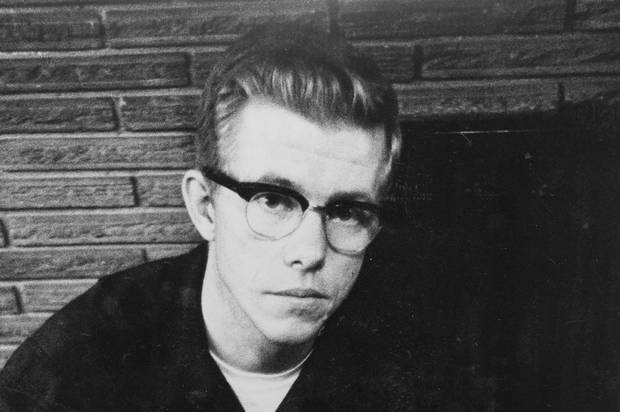On October 6, 1928, in an unusual move, Carl wrote to the New London chief of police confessing to the killing of the boy on August 9, 1923. He also told the police chief in the letter that he had killed many more, but could not recall the details. However, this confession was not born by remorse or kindness or any other like sentiment. In the meanwhile Carl travelled to Manhattan, and found himself a job as a bathroom attendant on the U.S. Army Transport, U.S. Grant, which was to sail for China in a week. But before the ship could leave port, he got into a drunken brawl and was dropped off the ship.
He stole into a train bound for Connecticut, but got down at Larchmont, New York, hungry and penniless, and looking for someone to rob to eat. Carl attempted burglary in Larchmont train depot on the night of August 26, 1923, but was caught. While he was at county jail awaiting trial, he confessed to many break-ins and also disclosed that he had escaped from Oregon prison, where he was yet to undergo the remainder of his 17-year sentence for shooting a cop. A message was dashed to Oregon police authorities, who confirmed what Carl had disclosed, and they informed that they were very eager to have Carl back for over 14 years that he still had to serve. Carl tried to cut a deal with the DA’s office trading guilty plea for a lesser sentence, but the moment he pleaded guilty, he was handed down the maximum prison sentence under the law.
Being a hardened criminal, Carl was sent to prison that was the exact opposite of the ‘correctional home’ — the Upstate New York’s Clinton Prison, better known as Dannemora, the hell hole. This was United States’ most brutal and repressive prison institution by far. The guards looked upon and treated the inmates as animals that needed to be controlled and had to be kept in check. No disrespect of authority was tolerated, and any insubordination, howsoever slight, was treated with backbreaking punishment. This was certainly not a place for Carl. He had a bomb ready within weeks, but the guards found it out, and it was dismantled. Carl hit another guard on the head with a 10-pound rod. The guard survived with serious injuries. Within first few months, Carl also made his first attempt at escape.
He climbed atop a prison wall and the jump from there landed him 30 feet straight down onto the concrete with both ankles and both legs broken together with a badly injured spine. He was unceremoniously picked from the floor, and dumped into a cell without any medical attention or surgical intervention. No doctor ever came to attend him and nobody was allowed to go anywhere close to Carl. After 14 months of constant agony, Carl was taken to the hospital, where he was operated upon and one of his testicles was removed. However, the neglect of 14 months had already taken a toll, and he would remain crippled for life despite the late medical attention. He was kept in solitary confinement for the most part and spent his time in pain. He was relegated to solitary confinement after his operation because soon after his surgery, he was again caught sodomizing another prison inmate. He crawled around in his cell with his broken back, and feeding on the insults heaped upon him on daily basis, his hatred grew and grew. Finally, in July 1928, Carl was released from Dannemora.
 The treatment meted out to Carl at Dannemora had instilled in him a savage rage and his hatred burned brighter and more furiously than ever. As soon as he got out he committed over a dozen burglaries and killed one man at least. He was soon apprehended and was sent to a Washington, D.C., jail, where for the first time he gave his real name for the records.
The treatment meted out to Carl at Dannemora had instilled in him a savage rage and his hatred burned brighter and more furiously than ever. As soon as he got out he committed over a dozen burglaries and killed one man at least. He was soon apprehended and was sent to a Washington, D.C., jail, where for the first time he gave his real name for the records.
At this time, there was a Jewish immigrant guard at the prison, Henry Lesser, who had been hired that year itself. This guard took notice of Carl, who, for the most part, remained withdrawn and did not talk to anybody. Carl made an attempt to flee, but could not succeed. The failed attempt brought punishment, and he was hoisted up and was kept hanging from the rope tied to his handcuffs with his feet clear off the ground for a day and a half. In addition, he was beaten up by the guards until he was unconscious and was left hanging by the ropes overnight.
For some reason, the rookie guard, Henry Lesser, did not find Carl worthy of hatred. Lesser sympathized with the angry prisoner, who was widely hated by everybody else. He gave Carl a dollar to buy cigarettes and also gave him extra food. This little act of kindness meant a great deal to Carl, who had never been treated with any amount of kindness or dignity. The two men became friends, and Carl even promised to write the story of his life for Lesser — a promise he kept. Lesser supplied Carl with pencil and paper, and Carl started writing the story of his gory life. Starting from the beginning of his childhood at the farm in Minnesota, Carl wrote a confession that ran into some 20,000 words. It was an unforgiving self-analysis and was equally unforgiving of the world that made him the man Carl was. He wrote extensively about the crimes he committed complete with the names of people, places and the way he went about his gruesome ways.
Even at the Washington, D.C., prison, Carl remained as defiant and uncooperative, and was as regularly punished with brutal physical punishment. On October 29, the D.C. prison received an arrest warrant for Carl for murdering an Alexander Uszacke on July 26, 1928 by strangling at Point House Road. On the other hand, the Salem police also got wind of Carl’s incarceration at the D.C. prison and his elaborate confession. The two witnesses who had seen Carl leaving the crime scene where the dead body of 12-year-old George Henry McMahon was found were sent over to identify Carl, which they did without much problem. Oregon State Penitentiary, on the other hand, got in touch with the Washington police asking them to hold Carl for them, as he was yet to do his remaining 14 years at their prison. The American law enforcement agencies were converging on Carl, and it was certain that Carl was about to be put away for a long, long time.
On November 12, 1928, Carl’s trial for the burglary and house-break charges started, and Carl defended himself rather ineptly, and was sentenced to 15 years on the first count and 10 years on the second. Both sentences were to run consecutively, which meant that Carl had 25 years to serve at the Federal Prison in Leavenworth, Kansas.
At Leavenworth, Carl requested a job change so that he did not have to mingle with the general population of the prison, which he was anyway adjudged too psychotic to mix with. He was assigned the laundry room, where he could go about sorting laundry all by himself. Robert Warnke was his supervisor there, and he was known to write up prisoners for minor infractions. He did the same to Carl, too, on several occasions, on account of which Carl was sent to solitary confinement for certain periods as punishment for the minor violations. This made Carl harbour deep resentment against Warnke.
Carl was working at the laundry on June 20, 1929, as usual, when he noticed a four foot long iron bar used to support transport crates leaning against the door. He walked to the rod wordless, picked it up and soundlessly went behind Warnke, who was doing some paperwork at that time. He raised the bar high up and brought it down with all his might squarely on Warnke’s head. Under the massive blow Warnke’s skull opened instantly, but Carl did not stop at that. The man dropped lifeless on the floor, but Carl went on hitting his head with the rod sending blood and bone all over the place in a fit of rage. The other inmates present in the laundry that day were scared to the bones and stood transfixed watching Carl butcher Warnke, after which he moved towards them swinging the rod and hitting out at them indiscriminately as they screamed and ran around the laundry room trying to protect themselves against Carl’s mad rage. But the door was locked. Finally, the general alarm brought dozens of guards armed with submachine guns and rifles. Carl dropped the rod calmly, and when the door was opened, he went quietly into his cell.
Carl’s time was running out. But his time at Leavenworth was unlike the prison time he had done anywhere else. The little kindness that Lesser had displayed towards Carl made Carl write to him regularly. And even during the time Carl waited for his trial to commence, he kept corresponding with Lesser. Through his letters to Lesser, it is known that Carl expected beatings and torture like everywhere else, and he had made up his mind to give his guards as hard a time as ever. So, he was just as uncooperative and rigid, but this time around there were no beatings, no torture. Being treated like a human being confused and astounded Carl. He was not used to being treated any better than slaughterhouse animals. It moved Carl in no small degree. “No one lays a hand on me. No one abuses me in any way…I have been trying to figure it out and I have come to the conclusion that, if in the beginning I had been treated as I am now, then there wouldn’t have been quite so many people…that have been robbed, raped and killed,” he wrote to Lesser.
 The trial for Warnke’s murder commenced on April 14, 1930, and Carl limped into the courtroom to stand trial, the limp being the gift of the medical treatment denied at the dungeons of Dannemora. Carl refused to have himself represented by a State appointed attorney, pleaded ‘not guilty’ and claimed trial. Five guards and 10 prisoners were summoned by the prosecution to testify and it took all of 45 minutes of deliberations for the jury to return a verdict of ‘guilty’ with no recommendation for mercy. Death, it was. September 5, 1930 was the appointed day, and Leavenworth penitentiary the place. Carl looked visibly relieved.
The trial for Warnke’s murder commenced on April 14, 1930, and Carl limped into the courtroom to stand trial, the limp being the gift of the medical treatment denied at the dungeons of Dannemora. Carl refused to have himself represented by a State appointed attorney, pleaded ‘not guilty’ and claimed trial. Five guards and 10 prisoners were summoned by the prosecution to testify and it took all of 45 minutes of deliberations for the jury to return a verdict of ‘guilty’ with no recommendation for mercy. Death, it was. September 5, 1930 was the appointed day, and Leavenworth penitentiary the place. Carl looked visibly relieved.
When certain people and groups tried to obtain mercy for him, Carl wrote to President Herbert Hoover that he was “perfectly satisfied with my trial and the sentence. I do not want another trial…I absolutely refuse to accept either a pardon or a commutation should either or the other be offered to me.” Carl had no inclination to be famous either. He was disinclined to talk to his interviewers and resented being subjected to searching questions. All he wanted was to die. “I look forward to a seat in the electric chair or dance at the end of a rope just like some folks do for their wedding night,” he said.
On the cold morning of September 5, 1930, Carl was taken to the noose, and he was eager for the closure. He snarled at the executioner’s sluggish pace, spat in his face and said, “Hurry up you bastard, I could kill 10 men while you’re fooling around!” Of course, nobody doubted the truth of the statement. The trap doors opened at 6:03 a.m., and Carl was pronounced dead at 6:18 a.m.
Originally written for and published in LAWYERS UPDATE as a four-part ‘Crime File’ in February 2014.





